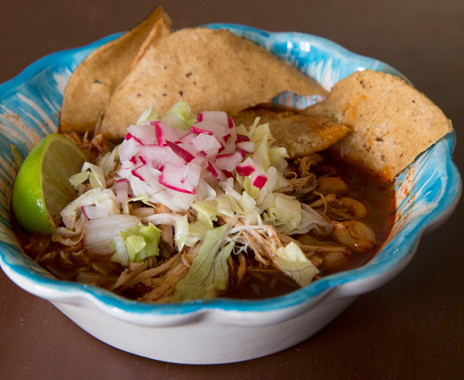We begin this month with a dispatch from the Census Bureau, which reports that the U.S. Hispanic population is projected to more than double in the next four-and-a-half decades—from 55 million in 2014 to 119 million by 2060.
Needless to say, the stakes are high: Latinos’ numbers and purchasing power already make them a critical constituency for today’s quick-serve and fast-casual chains. The implications for product developers and marketers are significant. A demographic shift of this magnitude forces businesses to think very differently about their customer bases and the methods they use to reach those consumers. It also compels companies to question basic assumptions about their existing product lines and to broaden their thinking during the product-development process.
When we traditionally talk about Hispanic cuisine in this country, the conversation almost invariably starts (and sometimes also ends) with Mexican food. But Latin America encompasses a vast number and range of countries, cultures, and cuisines. And even within Mexico there are numerous regional cuisines and ingredients that have yet to be fully explored by enterprising menu developers. Here are a handful of suggestions.
Take a regional tour of Mexico
By just about any standard, Mexican food has achieved mass penetration in the U.S. marketplace. And yet, as renowned chef and culinary traveler Anthony Bourdain wrote in a blog post last year, “We have barely scratched the surface of what Mexican food really is. It is NOT melted cheese over a tortilla chip. It is not simple or easy. … It is, in fact, old—older even than the great cuisines of Europe, and often deeply complex, refined, subtle, and sophisticated.”
While Americans are comfortable with mainstream Mexican foods and ingredients ranging from chorizo to tomatillo, Cotija cheese, tamarind, and chipotle and habanero peppers, they are not necessarily dialed into the geographic subtleties that separate one variety of Mexican cuisine from another. And that lack of familiarity could present significant opportunities.
Consider the cuisine of Oaxaca, for instance. A restaurant called Mezcal in San Jose, California, celebrates that region’s native flavors with estofadas—corn tortillas with cheese, onions, and various meats, accompanied by a sweet mole made with mild tomatillos and peanuts—as well as chicken tamales in black mole wrapped in banana leaves.
In Los Angeles, Chichen Itza Restaurant serves cuisine of the state of Yucatán, including sikil pak—a roasted tomato, pumpkin seed, and chive dip—and poc chuc, consisting of mesquite pork shoulder, sour orange juice, red onion, roasted tomato sauce, avocado, black bean purée, corn tortillas, and house-made chorizo. To the east, the Picante Grill in San Antonio focuses on the cuisine of Jalisco, including pozole, a rich soup simmered with lean pork and hominy, and birria, a spicy, slow-cooked stew made with marinated leg of goat or lamb and ancho pepper. Most of these examples are traditional regional Mexican foods, but they aren’t enchiladas with red sauce or a carne asada taco, which makes them considerably more interesting.
Venture further south
Again, it’s important to keep the totality of the Latin American culinary landscape in mind as you consider various new-product options. The cuisines of Peru, Brazil, Argentina, Venezuela, Guatemala, Cuba, and El Salvador all offer numerous avenues for exploration.
Some signature dishes are particularly well suited to quick-serve translations. Ropa vieja, a Cuban stewed beef and vegetable dish, could be a valuable import, as could Salvadoran pupusas—handmade corn tortillas filled with cheese, seasoned pork, or refried beans. Venezuelan arepas also lend themselves to a limited-service treatment, consisting as they do of round, corn-based bread “patties” filled with any number of cheeses, meats, and vegetables. And Argentinean chimichurri sauce, which Americans are discovering in ever-greater numbers, hasn’t been fully exploited by quick-serve restaurants in any meaningful way.
Take a “super” approach to dessert
Central and South America have provided us with a handful of the best-known superfood trends of the past decade, from açaí berries to acerola cherries. But the complete list of emerging Latin American superfruits is much, much longer. The tropical fruit borojó is rich in protein, vitamin C, calcium, and iron, while camu camu, derived from a shrub that grows in the Amazon rainforest, is also high in vitamin C and is often used in ice creams and other desserts. Cherimoya is a creamy-tasting fruit that has been described as a mix of banana, pineapple, papaya, peach, and strawberry. And lúcuma has a dry flesh that reminds many of maple or sweet potato.
How great would it be for quick serves or fast casuals to take the lead in serving better-for-you desserts or snacks by tapping into these novel, tasty superfruits that are also distinctly Latin American in origin? I could easily see chains seizing the first-mover advantage and taking the lead in an emerging superfood-dessert category.
What kinds of interesting Latin-flavored menu items has your restaurant or chain introduced recently? Drop me a line and let me know at marc@qsrmagazine.com.











